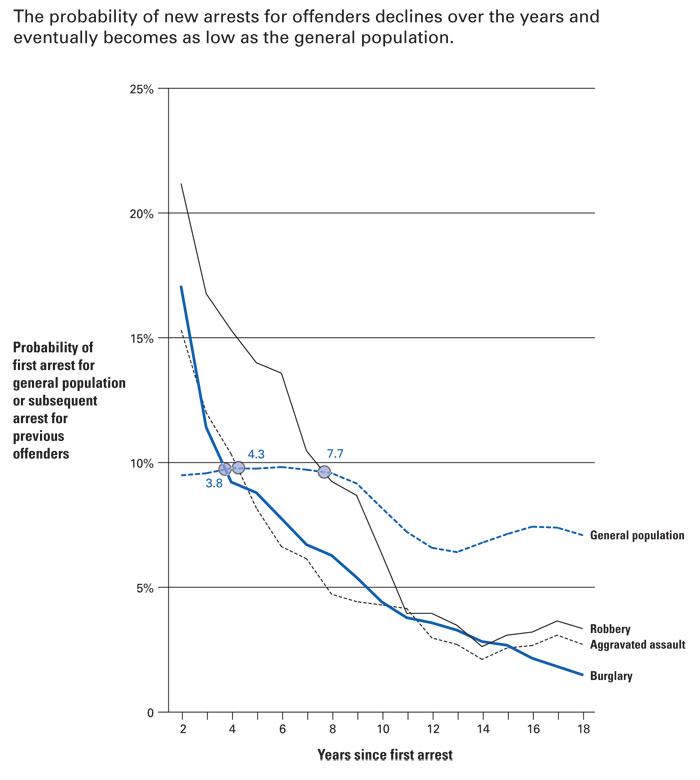Hazard Rate for 18-Year-Olds: First-Time Offenders Compared to General Population
The probability of new arrests for first offenders declines with time from first arrest and eventually becomes lower than that of the general population. For those in the general population who were first arrested in 1980, the probability of being re-arrested decreased steadily the longer they stayed clean of further involvement with the criminal justice system. They can be compared to the general population, which mostly includes people never before arrested, as well as to those recently released from prison, who have a high risk of re-arrest. The probability of re-arrest of the 1980 arrestees who stayed clean eventually dropped below that of other people of the same age. For those first arrested for burglary at age 18 years, in 1980, the crossover occurred 3.8 years later at age 21.8. If their first arrest was for aggravated assault, crossover occurred 4.3 years later at age 22.3, and if the arrest was for robbery, it was 7.7 years later at age 25.7. The probability of re-arrest at each of these crossover points was slightly less than 10 percent.


